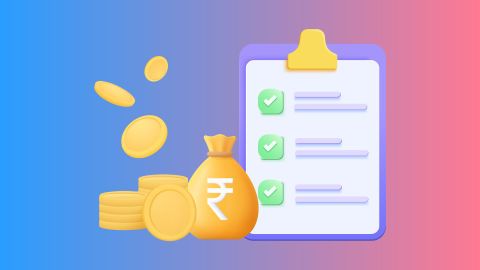A personal loan is a flexible financial product that provides a lump sum amount to meet various needs like medical expenses, education, or large purchases. It is usually repaid in Equated Monthly Instalments (EMIs) over a fixed period. Along with the benefits of quick funds and flexible repayment, borrowers should be aware of additional charges such as the stamp duty on loan agreement. This duty is a government tax applied to the legal documents of the loan and forms part of the overall cost. Understanding the stamp duty on personal loan, how it is calculated, and the payment process is crucial for managing your loan efficiently and avoiding unexpected expenses.
What is stamp duty?
Stamp duty is a government-imposed tax collected on legal documents and financial transactions, including loan agreements. It ensures that these documents are legally valid and enforceable in a court of law. When availing a personal loan, borrowers are required to execute the agreement on a loan agreement stamp paper, which serves as proof of authenticity. The stamp paper value may vary depending on the loan amount and the state’s regulations. This process not only legitimises the transaction but also helps the government maintain official financial records and generate revenue.
How is stamp duty calculated?
To calculate stamp duty for personal loan, you can use an easy stamp duty calculator available online. For example, if your loan agreement amount is Rs. 5 lakh, the stamp duty might be a fixed percentage or slab rate depending on your state’s regulations.
What is Stamp Duty Act?
The Stamp Duty Act governs the imposition and collection of stamp duty on various transactions, including personal loan. Each state in India has its version of the Stamp Duty Act, which outlines the rates, exemptions, and procedures for paying stamp duty. The Act ensures uniformity in the implementation of stamp duty laws and provides a legal framework for addressing disputes. The primary objective of the Stamp Duty Act is to regulate and standardize the process, making it transparent and efficient for both lenders and borrowers.
When to pay Stamp Duty on a personal loan?
Stamp duty on a personal loan must be paid at the time of executing the loan agreement. Typically, this means that the borrower is required to pay the stamp duty before or at the time of signing the loan documents. Failure to pay the stamp duty within the stipulated period can lead to legal complications, including the invalidation of the loan agreement or additional penalties. It is crucial to complete the payment process promptly to ensure that the loan agreement is legally binding and enforceable.
How to pay stamp duty?
- Determine the amount: Calculate the stamp duty amount based on the loan agreement value and applicable rates.
- Choose payment method: Stamp duty can usually be paid through various methods such as online payment, bank draft, or directly at the local stamp office.
- Complete documentation: Fill out the necessary forms and provide the required details about the loan and borrower.
- Submit payment: Make the payment as per the chosen method and obtain a receipt or acknowledgment for future reference.
- Attach stamp: Affix the stamp duty receipt to the loan agreement, as proof of payment.
What are stamp duty charges on personal loan?
Stamp duty charges for personal loans vary depending on the state and the loan amount. Typically, the stamp duty percentage is calculated either as a fixed fee or a percentage of the loan value. These stamp duty charges for personal loan can differ widely across states, with urban areas often having higher rates than rural ones. It’s essential to check with your lender or local authorities to know the exact stamp duty percentage applicable to your loan. Some states may also provide exemptions or lower rates for certain loan types or borrower categories.
Know more about personal loan interest rates and charges before applying for a loan.
Conclusion
Understanding and managing stamp duty on personal loans is an essential part of the borrowing process. Stamp duty, while an additional cost, is a legal requirement that validates the loan agreement and ensures its enforceability. By knowing when and how to pay, understanding the charges, and preparing the necessary documents, borrowers can avoid complications and ensure a smooth loan experience. For accurate information and assistance, consult your lender or visit local government offices.




